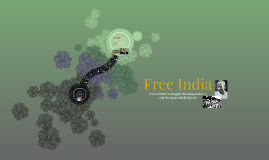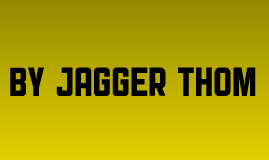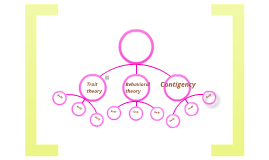Free India
Transcript: Free India India gained their independence from the British Empire on August 15th, 1947. Independence coincided with the partition of India (which Gandhi was opposed to), in which the British Indian Empire was divided along religious lines into the Dominions of India and Pakistan; the partition was accompanied by violent riots and mass casualties, and the murders of nearly 15 million people due to sectarian violence. Although the casualties were extremely high, without Gandhi stopping some of the riots, the casualties would have been much higher. The Beginning While Gandhi was imprisoned in 1942, the Muslim League had gained control over the movement and were now at the center of the political scene. In 1947, Gandhi, who was opposed to partition, suggested an agreement which required the Congress and Muslim League to cooperate and attain independence under a provisional government. One country's struggle for independence and the man who led them In March 1942, The British government needed the co-operation of India during the war. Realizing that many Indian citizens were greatly unhappy, the British government sent a delegation to India under the leadership of Stafford Cripps. The purpose of the mission was to negotiate with the Indian National Congress a deal to obtain total co-operation during the war, in return for redistribution of power from the crown and the Viceroy to an elected Indian legislature. These talks failed and ended in the resolution of limited-dominion states that was widespread unaccepted by the Indian movement Many citizens in India were angry at the British Governor-General of India, Lord Linlithgow, who had, without their consent, brought India into WWII. The Muslim League in India supported the war but Congress was divided. Congress compromised; agreeing to support the war, but asking for their independence in return. Their proposal was rebuffed. The Story of India's Freedom Struggle - Important Events. Retrieved December 18, 2014, from http://www.kamat.com/kalranga/freedom/timeline.htm. (2011). TimeRime.com - Quit India Movement timeline. Retrieved December 18, 2014, from http://timerime.com/en/timeline/875343/Quit+India+Movement/. (2011). Mahatma Gandhi - Biography - Anti-War Activist - Biography ... Retrieved December 18, 2014, from http://www.biography.com/people/mahatma-gandhi-9305898. (2004). Mahatma Gandhi - Wikipedia, the free encyclopedia. Retrieved December 18, 2014, from http://en.wikipedia.org/wiki/Mahatma_Gandhi. After Independence: Remembering a Hero In July of 1942, the Indian National Government passed a resolution demanding immediate, and complete independence. The Quit India resolution was passed when the British refused to give full independence. 1946 Mohandas Karamchand Gandhi was assassinated in the garden of the Birla House at 5:17 PM on 30 January 1948. His assassin was a Hindu nationalist who had strongly opposed Gandhi's nonviolence doctrine. Gandhi's death was mourned nationwide. Over two million people joined the five-mile long funeral procession that took over five hours to reach Raj Ghat from Birla house, where he was assassinated. Gandhism designates the ideas and principles Gandhi promoted. Of central importance is nonviolent resistance. Although Gandhi was not the originator of the principle of nonviolence, he was the first to apply it in the political field on a large scale. Mahatma Gandhi will forever be remembered for his fierce dedication to the Indian people and to the independence of India. Gandhi and the entire Congress Working Committee were arrested in Bombay by the British on 9 August 1942. Gandhi was imprisoned for two years, but was released before the end of the war because he had contracted malaria and was in need of surgery. Also, the British Raj did not want him to die in jail and enrage the entire nation. 1948 THANK YOU! Great Britain ruled over the subcontinent of India for 89 years (1858-1947). The Quit India Movement was a civil disobedience movement that began in August of 1942 after Mohandas Karamchand Gandhi's call for immediate independence. 1942 Muhammad Ali Jinnah was the leader of the Muslim League at the time, and when he called for Direct Action, in August of 1946, Gandhi was infuriated and personally visited the most riot-prone areas to stop the massacres. Jinnah's actions had gone against everything Gandhi believed in. For years he had led the movement in peaceful protest. He made strong efforts to unite the Indian Hindus, Muslims, and Christians. 1946 1939 1942 At the end of the war, after Britain had made it clear that control would be transferred to Indian people, Gandhi called off the years-long movement and roughly 100,000 political prisoners were released from jail. The Cripps Mission 1947 1942

















